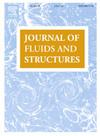Experimental and coupled model investigation of an active jet for suppressing vortex-induced vibration of a box girder
Abstract
Owing to the availability of the jet flow control strategy in mitigating strongly alternating vortex motion and shedding in the wake flow structure, an active jet produced by an air velocity regulator installed on a box girder is proposed to alleviate the fluctuating aerodynamic force imposing on a fixed box main girder model. The pressure distributions on the top and bottom surfaces of the deck's two sections were recorded using a digital miniature pressure scanner system. The investigation manifests that the fluctuation of the outer surface pressure (OSP) distribution of the deck is alleviated, and the mean value is stable in all test cases. Wavelet coherence analysis of the OSP between two sections on the deck was performed to determine the relationship between the surface pressures varying with frequency over time. Based on the OSP distribution, the aerodynamic force was obtained to macroscopically display the availability of the active jet. Moreover, an active jet was applied to a free-vibrating box girder model to study its ability in suppressing vortex-induced vibration (VIV). The results of the oscillation response obtained by a laser displacement apparatus show that the box girder with the active jet has a lower vibration amplitude, and the VIV can be entirely suppressed when the non-dimensional jet momentum coefficient reaches a certain value. In addition, a coupled model of VIV was developed to predict the vibration response of the deck. The calculated results of the vibration response of the deck obtained by the coupled model are close to those of the experiments.

 求助内容:
求助内容: 应助结果提醒方式:
应助结果提醒方式:


